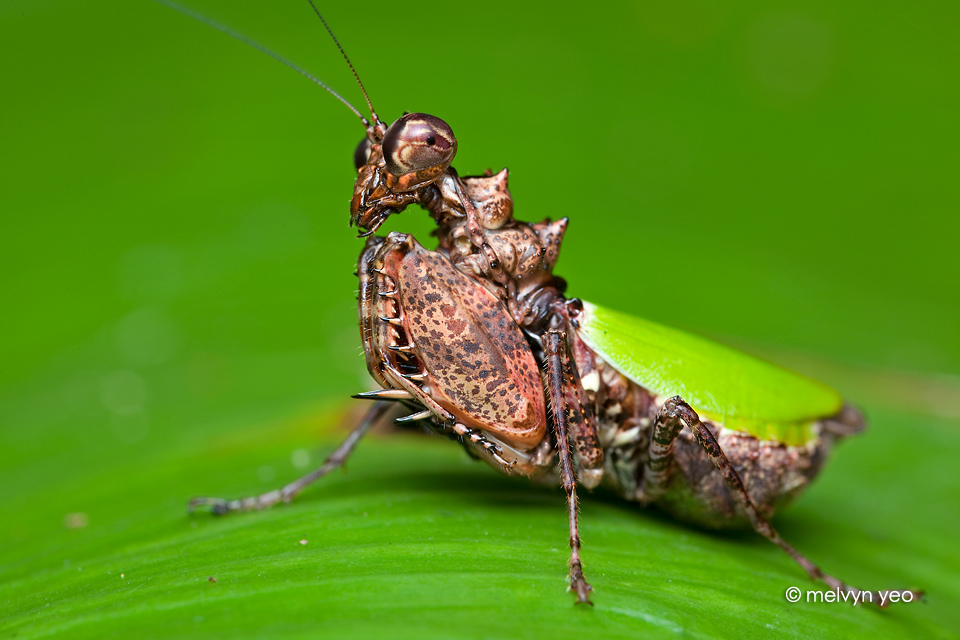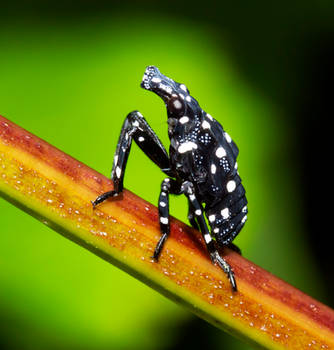ShopDreamUp AI ArtDreamUp
Deviation Actions
Description
Generally, mantises protect themselves by camouflage and concealment. When directly threatened, many mantis species stand tall and spread their forelegs, with their wings fanning out wide. The fanning of the wings makes the mantis seem larger and more threatening, with some species having bright colors and patterns on their hind wings and inner surfaces of their front legs for this purpose. If harassment persists, a mantis may strike with its forelegs and attempt to pinch or bite. As part of the threat display, some species also may produce a hissing sound by expelling air from the abdominal spiracles. When flying at night, at least some mantises are able to detect the echolocation sounds produced by bats, and when the frequency begins to increase rapidly, indicating an approaching bat, they will stop flying horizontally and begin a descending spiral toward the safety of the ground, often preceded by an aerial loop or spin.
Mantises are camouflaged, and most species make use of protective coloration to blend in with the foliage or substrate, both to avoid predators, and to better snare their prey. Various species have evolved to not only blend with the foliage, but to mimic it, appearing as either living or withered leaves, sticks, tree bark, blades of grass, flowers, or even stones. Some species in Africa and Australia are able to turn black after a molt following a fire in the region to blend in with the fire ravaged landscape (a type of adaptive melanism referred to as fire melanism). While mantises can bite, they have no venom. They can also slash captors with their raptorial legs (which is often preceded by a threat display wherein the mantis will rear back and spread its front legs and wings (if present), often revealing vivid colors and/or eyespots to startle a predator). Mantises are without chemical protection; many large insectivores will eat a mantis, including Scops owls, shrikes, bullfrogs, chameleons, and Milk Snakes.
Source [link]
Mantises are camouflaged, and most species make use of protective coloration to blend in with the foliage or substrate, both to avoid predators, and to better snare their prey. Various species have evolved to not only blend with the foliage, but to mimic it, appearing as either living or withered leaves, sticks, tree bark, blades of grass, flowers, or even stones. Some species in Africa and Australia are able to turn black after a molt following a fire in the region to blend in with the fire ravaged landscape (a type of adaptive melanism referred to as fire melanism). While mantises can bite, they have no venom. They can also slash captors with their raptorial legs (which is often preceded by a threat display wherein the mantis will rear back and spread its front legs and wings (if present), often revealing vivid colors and/or eyespots to startle a predator). Mantises are without chemical protection; many large insectivores will eat a mantis, including Scops owls, shrikes, bullfrogs, chameleons, and Milk Snakes.
Source [link]
Image size
960x640px 235.52 KB
© 2012 - 2024 melvynyeo
Comments20
Join the community to add your comment. Already a deviant? Log In
big claws!!






























